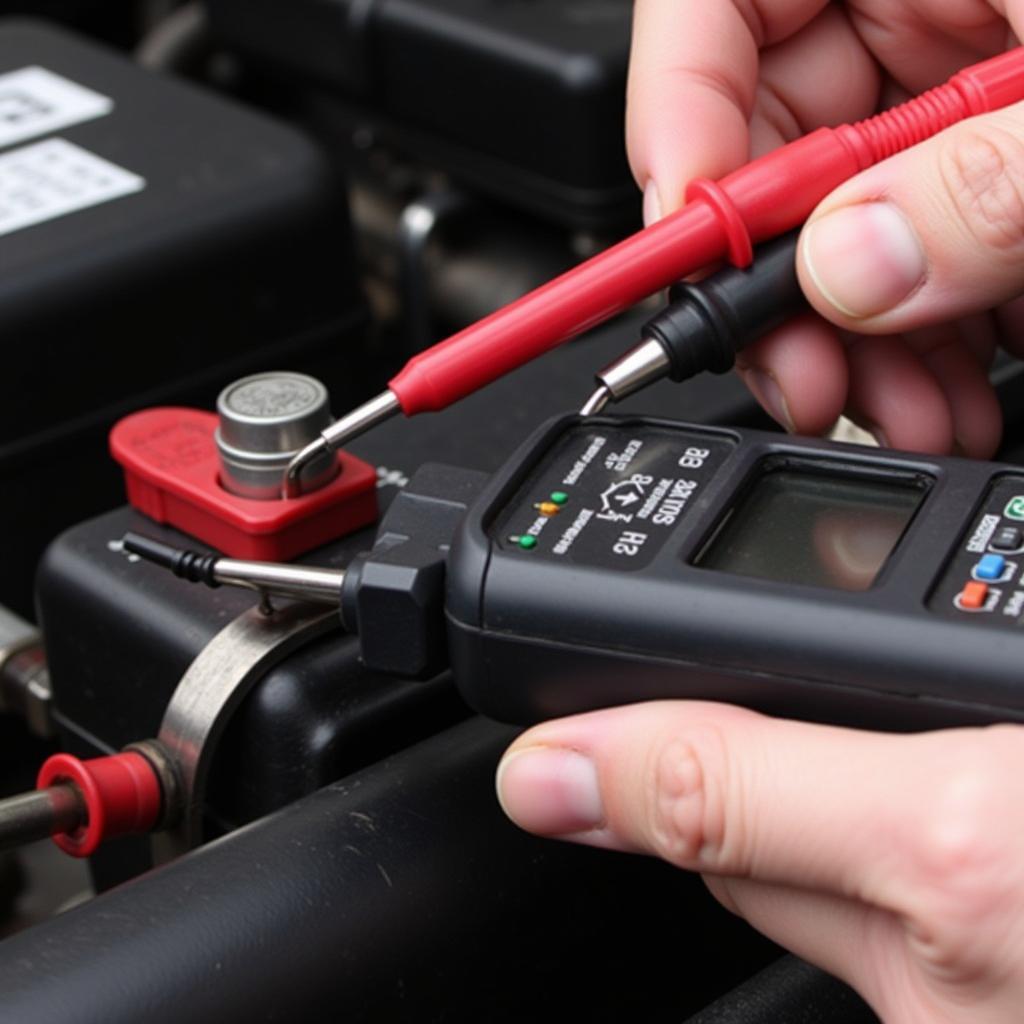Using a multimeter to find a parasitic battery drain is a crucial skill for any car owner. A parasitic draw, even a small one, can leave you stranded with a dead battery. This guide provides a step-by-step approach to pinpoint and eliminate that pesky drain using a multimeter, empowering you to keep your car reliably on the road. Let’s dive in and learn how to find parasitic battery drain multimeter style.
Understanding Parasitic Battery Drain
What exactly is a parasitic battery drain? It’s simply any electrical component that continues to draw power even when the vehicle’s ignition is off. This can range from a faulty interior light to a more complex issue within the car’s computer system. If you’ve experienced signs of faulty battery, a parasitic drain might be the culprit.
Common Causes of Parasitic Drain
Several components are usual suspects when it comes to parasitic drain. These include:
- Interior lights: A stuck door switch or faulty light itself can keep a light on, draining the battery over time.
- Faulty alternator: While the alternator charges the battery while driving, a malfunctioning one can also drain it when the car is off.
- Stereo system: Some aftermarket stereos have been known to draw power even when turned off.
- Alarm system: A malfunctioning alarm system can continuously draw power, leading to a dead battery.
- Clock and other electronic modules: Even seemingly small draws from these components can add up over time.
How to Find Parasitic Battery Drain Multimeter: A Step-by-Step Guide
Before starting, gather your tools: a multimeter and a wiring diagram for your specific vehicle. Safety is paramount when working with a car’s electrical system.
-
Prepare your vehicle: Turn off all lights, accessories, and the ignition. Close all doors and ensure the hood is latched.
-
Connect the multimeter: Set your multimeter to the DC Amps setting (typically a 10A or 20A range). Disconnect the negative battery cable. Connect the red lead of the multimeter to the negative battery terminal and the black lead to the disconnected negative battery cable.
 Connecting Multimeter to Car Battery
Connecting Multimeter to Car Battery -
Observe the initial reading: The multimeter will display the total current draw. A reading of over 50 milliamps (0.05 amps) generally indicates a parasitic drain. If you have a truck battery keeps draining, this process is the same.
-
Locate the culprit: Begin removing fuses one by one from the fuse box. Observe the multimeter reading after removing each fuse. A significant drop in the current reading indicates the circuit powered by that fuse contains the parasitic drain.
-
Narrow it down: Consult your wiring diagram to identify the components within the circuit associated with the problematic fuse.
 Checking Fuses for Parasitic Draw
Checking Fuses for Parasitic Draw -
Isolate the component: If the circuit involves multiple components, individually disconnect them to pinpoint the one causing the drain.
Interpreting Multimeter Readings
Understanding the readings on your multimeter is key to effectively diagnosing the issue. A high initial reading confirms a drain. A drop when a fuse is removed helps isolate the problem. What if you find a small drain but your battery was flat? Remember that even small drains add up.
Tips for Accurate Readings
- Ensure a stable connection for your multimeter leads.
- Double-check your multimeter settings.
- Be patient and methodical when removing fuses.
“Finding a parasitic drain isn’t always easy, but with a systematic approach using a multimeter, it’s definitely achievable,” says John Miller, a seasoned automotive electrical diagnostician.
Preventing Future Drains
Regularly check for draw on car battery can help prevent future problems. Also, be mindful of aftermarket installations, as these can sometimes introduce unintended drains.
“Prevention is better than cure,” advises Sarah Lee, an automotive engineer. “Regular maintenance and careful installation of aftermarket accessories can go a long way in preventing parasitic drains.”
Conclusion
Finding a parasitic battery drain with a multimeter empowers you to address a common car problem. By following this guide, you can pinpoint the source of the drain, saving yourself time and money, and avoiding the frustration of a dead battery. This knowledge is essential, especially if your car battery randomly goes dead.
FAQ
-
What’s a normal parasitic drain reading? A reading below 50 milliamps (0.05 amps) is generally acceptable.
-
Can I drive with a parasitic drain? Yes, but the battery will continue to discharge, eventually leaving you stranded.
-
Do all cars have parasitic drains? All cars have some level of parasitic drain, but it’s usually minimal.
-
What if I can’t find the drain? Consult a qualified automotive electrician.
-
Is a multimeter expensive? No, affordable multimeters are readily available.
-
Do I need a special multimeter for this task? A standard multimeter with a DC Amps setting is sufficient.
-
Can a parasitic drain damage my car? Over time, a significant drain can shorten the lifespan of your battery.



